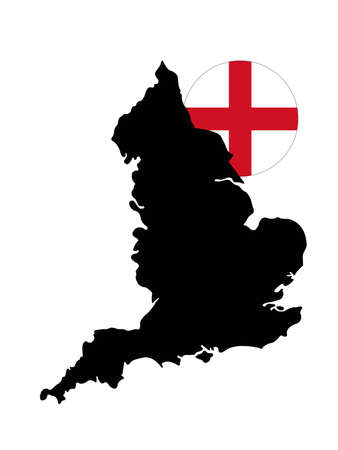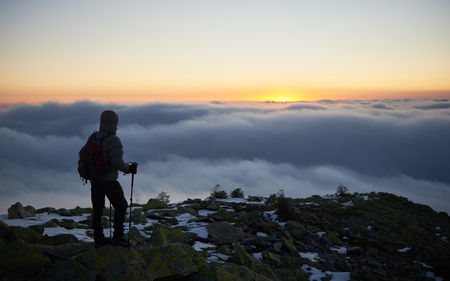Introduction to Britain’s Remote Isles
When most people imagine trekking across the British Isles, their minds often wander to the well-trodden paths of the Lake District or the bustling trails of the Scottish Highlands. Yet, beyond these famed destinations lie an array of remote, lesser-known islands scattered around Britain’s rugged coastline. These secluded isles—from windswept Scottish outposts to hidden Cornish gems—offer a slower, more contemplative approach to adventure. Here, time seems to stand still and the crowds thin out, allowing for a truly immersive experience among untouched landscapes and vibrant local cultures. Setting foot on these distant shores, one is greeted by dramatic cliffs, ancient ruins, unique wildlife, and a sense of isolation that inspires both awe and reflection. This guide sets the scene for those ready to leave the mainland behind and embrace the wild charm of Britain’s off-the-beaten-track islands—a perfect escape for walkers seeking something genuinely different from the usual rambles.
2. Planning Your Expedition
Embarking on a trek across Britain’s remote isles demands meticulous preparation. Each island offers its own set of logistical puzzles, so it pays to do your homework well in advance.
Travel Options Across Britain’s Transport Networks
Getting to these outlying islands typically involves a combination of trains, coaches, ferries, and sometimes even small planes. Many journeys start with a rail trip from major cities like London or Edinburgh, followed by local bus connections and a ferry service. Below is an at-a-glance guide to typical travel routes:
| Island | Mainland Departure Point | Recommended Transport Combination |
|---|---|---|
| Isle of Eigg | Mallaig (Scotland) | Train to Mallaig > Ferry to Eigg |
| Skomer Island | Milford Haven (Wales) | Train/Coach to Milford Haven > Bus to Martin’s Haven > Short ferry crossing |
| Lundy Island | Ilfracombe/Bideford (Devon) | Train to Barnstaple > Bus/Taxi to port > MS Oldenburg ferry |
| St Kilda | Oban/Uig (Scotland) | Train/Coach > Ferry to Harris/North Uist > Charter boat to St Kilda |
Permits and Permissions
Certain islands, especially those that are nature reserves or privately owned, may require advance permits for trekking or overnight stays. Check with the relevant local authorities or conservation bodies such as the National Trust or Scottish Natural Heritage. For example, Skomer Island limits visitor numbers for wildlife protection, so booking well ahead is essential.
Permit Checklist:
- Check if island access requires pre-booked tickets or permits.
- For wild camping, research specific regulations—some areas prohibit tents outside designated spots.
- If planning photography or drone usage, review local bylaws and restrictions.
Weather Considerations: The British Isles’ Unpredictability
The weather on Britain’s outlying isles can change in an instant—one moment you’re basking in sunshine, the next you’re dodging horizontal rain driven by Atlantic gusts. Always consult the Met Office forecast before departure and plan for contingencies. Ferries can be cancelled at short notice due to high winds or rough seas.
Packing Essentials for Island Conditions:
| Item | Purpose / Local Insight |
|---|---|
| Waterproof jacket and trousers | A must-have for sudden downpours—look for breathable fabrics. |
| Layered clothing system | The temperature can swing widely even within one day. |
| Robust boots with good grip | Trekking paths can be boggy and uneven. |
| OS maps / compass / GPS device | Mobile signal isn’t guaranteed on remote trails. |
| Sufficient food and water supplies | Cafés and shops are rare on many islands—carry enough for your stay plus emergencies. |
| Midge repellent (especially in Scotland) | Midges can be relentless during summer months—don’t underestimate them! |
| Reusable bags for rubbish | You’ll need to take all waste off the island with you; leave no trace behind. |
| First aid kit and personal medications | No chemists on most isles; come prepared for blisters, scrapes, or minor ailments. |
| Battery pack for devices | No guarantee of charging points beyond the mainland. |
A Final Word on Preparation
Treat every island trek as an expedition: double-check ferry schedules, have backup plans if crossings are cancelled, and always let someone know your route. Preparation is half the adventure—and ensures your journey through Britain’s wild edges is memorable for all the right reasons.

3. Top Off-the-Beaten-Track Isles to Explore
Britain’s coastline is peppered with remote islands, each boasting its own unique charm and rugged landscapes. For those seeking adventures far from the crowds, here’s a curated selection of lesser-known isles that offer both natural beauty and a taste of local character.
The Hebrides: Wild Beauty on Scotland’s Edge
Scattered off Scotland’s west coast, the Hebrides are renowned for their windswept beaches, dramatic cliffs, and peat-scented air. The Outer Hebrides, such as Harris and Lewis, blend ancient standing stones with pristine machair meadows. Don’t miss the chance to sample local black pudding or catch a ceilidh in a village hall.
Isles of Scilly: Subtropical Serenity
Lying just off Cornwall, the Isles of Scilly feel a world apart from mainland Britain. Expect crystal-clear waters, white sandy coves, and a pace of life dictated by tides and weather. Tresco’s famous Abbey Garden bursts with exotic plants, while St Martin’s is perfect for a quiet ramble among wildflowers and seals basking on rocks.
Orkney: Ancient Echoes and Windswept Wonders
Northeast of the Scottish mainland, Orkney combines Neolithic heritage with a thriving creative community. From the atmospheric Ring of Brodgar to the sea-battered cliffs at Yesnaby, these islands brim with stories. Local cheese, craft ale, and tales of selkies are never far away in Orkney’s warm-hearted villages.
Shetland: Where Norse Roots Run Deep
Shetland sits at Britain’s northernmost frontier, closer to Norway than London. Its treeless moors, deep fjords (voes), and puffin colonies create an untamed landscape that feels truly remote. Winter brings Viking fire festivals, while summer offers endless daylight for exploring Iron Age brochs or spotting orcas offshore.
Local Quirks and Traditions
Each isle harbours its own traditions—be it the Gaelic spoken in the Hebrides, flower festivals on Scilly, or Shetland’s Up Helly Aa torchlit parade. Embracing these quirks not only enriches your journey but also supports communities keeping these unique cultures alive.
In Summary
If you’re drawn to windswept shores and authentic British hospitality, venturing to these remote isles promises an experience well beyond the guidebook staples.
4. Classic Treks and Hidden Pathways
If you’re keen to truly immerse yourself in the wild, unspoilt corners of Britain’s remote isles, you’ll need to go beyond the well-trodden routes. While each island boasts its own character, they all offer a unique blend of classic trails and secret footpaths waiting to be discovered. Below, you’ll find a concise overview of some of the standout walks alongside lesser-known rambling routes, together with practical tips on navigation and local etiquette.
Signature Trails of Britain’s Isles
| Trail | Location | Distance | Highlights |
|---|---|---|---|
| The Quiraing Circuit | Isle of Skye | 7 km loop | Dramatic rock formations, panoramic sea views |
| The Hoy High Route | Orkney | 10 km one-way | Sea stacks, wild moorland, WWII relics |
| Circular Walk to St. Martins Head | Isles of Scilly | 8 km circuit | Sandy bays, seals, ancient cairns |
Wild Hikes and Unmarked Footpaths
Away from mapped trails, many isles harbour hidden tracks: sheep-trodden ways across heathery hillsides or faint paths through coastal machair. These require a bit more self-reliance. Always take an Ordnance Survey map (paper or digital), compass, and know your grid references. Mobile signal can’t always be relied upon out here.
Navigational Know-How for Ramblers
- Check tide times before coastal walks—sections may become impassable at high water.
- Stick to established paths where possible to avoid disturbing ground-nesting birds or fragile flora.
- If you must cross private land, follow the Countryside Code: leave gates as you found them and give livestock a wide berth.
Respecting Local Customs and Communities
The remoteness that makes these islands special also means communities are close-knit and sensitive to visitor impact. Greet locals with a friendly “hello”, keep noise levels down in villages, and support small shops or cafés when you can—it’s appreciated far more than you might imagine. Above all, remember that even the wildest isles are someone’s home.
5. Local Life and Sustainable Trekking
Understanding Island Communities
Trekking across Britain’s remote isles isn’t just about wild landscapes—it’s also an invitation into the fabric of local life. Many of these islands, from the Shetlands to the Isles of Scilly, are home to tight-knit communities with deep-rooted traditions, distinct dialects, and a pace of living that might feel worlds away from mainland cities. Whether you’re passing crofts in Orkney or stopping at a community-run shop on Barra, respectful engagement is key. A simple “hello” or “good morning”—and a willingness to listen—can open doors to genuine connections.
Wildlife Encounters: Observe, Don’t Disturb
Britain’s offshore havens are sanctuaries for rare birds, seals, otters, and more. The puffin colonies on Skomer, red deer roaming Jura, and basking sharks off Mull are all highlights—provided trekkers observe with care. Always keep a respectful distance, stick to marked paths where possible, and avoid loud noises or sudden movements. Remember that even a well-intentioned approach can disrupt nesting sites or feeding grounds.
Tips for Engaging Respectfully
- Support local businesses—buy produce, crafts or meals directly from islanders.
- Ask before photographing people or private property; some customs may differ from the mainland.
- Follow island-specific codes of conduct (many are signposted at ferry terminals or visitor centres).
Minimising Your Environmental Footprint
Sustainable trekking is not just a buzzword—it’s a necessity on fragile islands. Pack out all rubbish (including biodegradable waste), use refillable water bottles, and avoid single-use plastics. Opt for eco-friendly accommodation where available and use public transport or bicycles instead of cars when exploring larger islands. Consider joining local conservation initiatives—many welcome short-term volunteers or donations.
A Thoughtful Approach Makes All the Difference
The charm of Britain’s remote isles lies in their balance between nature and community. As visitors, our responsibility is to help preserve that balance—by walking lightly, giving back where we can, and appreciating not just the scenery but the stories and stewardship of those who call these islands home.
6. Essential British Kit and Provisions
Trekking across Britain’s remote isles isn’t just about sturdy boots and a sense of adventure; it’s also about being properly kitted out for the unique challenges of this landscape. The British climate is famously unpredictable, so having the right gear can make the difference between a memorable hike and a miserable slog.
Weatherproof Clothing: Non-Negotiable Layers
First things first: waterproofs are absolutely essential. Invest in a high-quality, breathable rain jacket and trousers – “just in case” is never optional here. The wind can be biting even in summer, so pack insulating base layers and a reliable fleece. Don’t forget a woolly hat and gloves; the weather can turn on a sixpence, especially near the coast or on exposed moorland.
Footwear for All Terrains
A pair of well-fitted, waterproof hiking boots with excellent ankle support is indispensable for tackling muddy paths, rocky outcrops, and slippery boardwalks common across places like Skye or the Outer Hebrides. Bring extra socks – merino wool is best for wicking away moisture and keeping blisters at bay.
Packing Smart: Rucksacks and Navigation
A 30-40L rucksack will suit most day treks, leaving space for essentials without being unwieldy. Always include an Ordnance Survey map (the gold standard for British walkers) and a compass; mobile signals can be patchy out here. A head torch with spare batteries is wise, as daylight hours can be short outside midsummer.
Locally Inspired Fuel: Snacks with a British Flavour
When it comes to provisions, skip the generic trail mix. Try energy-boosting oatcakes, which have kept Scottish hillwalkers going for generations, or snack on slices of mature Cheddar with apples for a proper taste of the countryside. For a sweet treat, tuck in some Kendal Mint Cake—a Lake District classic—or flapjack bars packed with oats and golden syrup. Carry a flask of strong tea or hot Ribena to warm up during those inevitable rain showers.
Essential Extras
Don’t forget sunscreen and insect repellent—midges are notorious on Scottish isles from late spring onwards. A lightweight sit mat or small tarp lets you enjoy rest stops comfortably even on damp ground. Finally, carry a reusable water bottle; many island treks pass fresh streams suitable for refilling (with appropriate filtration).
With the right kit and hearty local fare in your pack, you’ll be well prepared to embrace every twist of weather and terrain Britain’s remote isles can throw at you—leaving you free to focus on soaking up their wild beauty.
7. Further Resources and Inspiration
Embarking on a trek across Britain’s remote isles is as much about preparation as it is about adventure. Fortunately, a wealth of resources exists to help you plan your journey and spark fresh ideas for routes far from the well-trodden path.
Essential Maps and Guides
Begin with Ordnance Survey maps; their Explorer series (orange covers) offer detailed topography ideal for island walking. For more narrative-driven inspiration, look to Cicerone’s guidebooks, which cover everything from the Outer Hebrides to the Isles of Scilly. Both resources are widely available in UK bookshops or online, and local libraries often stock them too.
Websites and Digital Tools
For up-to-date route information and community advice, websites such as Walking Britain, Walkhighlands (which covers Scottish islands in detail), and the Ramblers Association are invaluable. The OS Maps app also allows you to plot custom routes and download maps for offline use—ideal when mobile signal drops out on more isolated isles.
Connecting with Local Walking Groups
If you fancy company or insider tips, many towns and villages have walking clubs that welcome newcomers. Check notice boards at village halls or use Meetup.com to find groups like “Isle of Skye Walkers” or “Hebridean Ramblers.” These groups often organise walks beyond established trails, offering a genuine taste of local knowledge and camaraderie.
Create Your Own Adventure
The real joy of exploring Britain’s lesser-known isles lies in making discoveries for yourself. Use these resources as a springboard but don’t be afraid to stray from classic routes. Speak to locals, consult parish newsletters, and keep an open mind—often, the most memorable paths are those not found in any guidebook. Lace up your boots, trust your map, and venture out: Britain’s wild isles await your footsteps.


